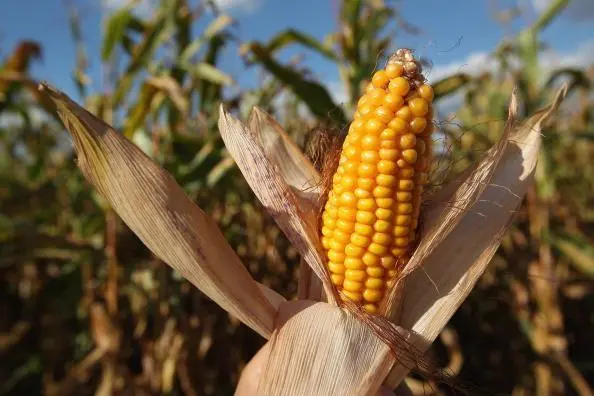PHOTO
(The opinions expressed here are those of the author, a market analyst for Reuters.)
NAPERVILLE, Ill. - Chicago corn bulls were deflated on Wednesday as futures dropped below a key level for the first time in seven months, and that comes after the most-active contract’s largest monthly decline in nearly a year.
June is historically the most common month for new-crop corn to make annual highs and the most-active contract is equally as likely to set tops in May, June or July. But futures are trading significantly below the recent highs, causing some doubt even among optimists.
A bull market usually needs continuous feeding to sustain, and this can be a tough time of year for that without forthcoming U.S. crop problems or some other global interruption not already under discussion.
Most-active CBOT corn futures on Wednesday dropped below their 100-day moving average for the first time since Oct. 28, though they settled above it at $7.31-1/4 per bushel. The contract was trading more than $1 below its April 29 high for part of the session.
December 2022 corn on Wednesday traded entirely below its 50-day average for the first time since September. The new-crop contract finished at $6.91-1/2 per bushel, its first sub-$7 settle since April 4.
At Wednesday’s close, most-active corn was more than 11% off the April 29 high and new-crop futures were down 10% since peaking on May 16. The most-active contract had fallen 7.4% in May, its largest monthly decline since June 2021.
However, corn is still trading above the elevated year-ago levels. On June 1, 2021, most-active futures settled at $6.88-3/4 per bushel and December 2021 ended at $5.77. Last year’s market uncertainties arose as global grain supplies had rapidly contracted to multi-year lows.
A year later, the U.S. Department of Agriculture predicts no loosening in the tight global corn situation through at least mid-2023, though it is early yet. The biggest unknown now regards major grain exporter Ukraine, whose corn has been trapped in the country since Russia invaded in late February.
Russia has recently offered to allow Ukraine grain exports to resume in exchange for the lifting of some Western sanctions, but the West has not yet expressed interest. Even with a resumption in Ukraine’s exports, its upcoming corn crop has already been seriously limited by the invasion, and ideas on the crop potential vary widely.
Large speculators have a lot of room to add short corn positions, which remain historically low but have begun inching upward in recent weeks. An increasing number of shorts could add significant pressure to futures.
Traders may have found corn overpriced versus soybeans, further weighing on corn. The new-crop CBOT ratio, November soybeans to December corn, surged 3.4% Wednesday, its largest daily gain in just over a year. The ratio has risen 11% since mid-May, but at 2.19, it is still the lowest since 2019.
U.S. CROP SIGNALS
New-crop corn futures made their 2021 highs in May as did the most-active contract. U.S. corn planting was quick last year and there was no widespread weather scare with the crop. Drought in the northwestern U.S. Corn Belt was known at the start of last summer, so it was not surprising.
The northwestern Corn Belt is once again on display as North Dakota planted corn at a record-slow pace this spring, and northwest Minnesota and parts of South Dakota are in similar positions. That mostly affects acres for now, which U.S. farmers as of March had planned to cut by 4% from last year.
New-crop corn futures during May averaged 15% higher than in the first half of March, when USDA took its initial area survey. Some analysts point to that price jump as a reason the June survey could show more corn plantings than in March.
But a material increase in corn acres from the March to June acreage survey has never previously occurred when mid-May planting was as slow as this year, and it seems like the market is at least somewhat in touch with that.
I posted a poll on Twitter on Wednesday afternoon asking how U.S. corn acres in the June survey will differ from March. As of early evening, some 49% of at least 440 respondents saw a notable drop in acres, but 28% voted for a respectable increase.
Despite some preparation for possible fewer acres, strong yields could be offsetting, and many U.S. farmers report excellent early corn conditions. The near-term weather forecast is not perfect but is not threatening, and it could get tougher for corn bulls to justify new highs from here if weather concerns do not develop soon.
Karen Braun is a market analyst for Reuters. Views expressed above are her own.
(Editing by Matthew Lewis)












